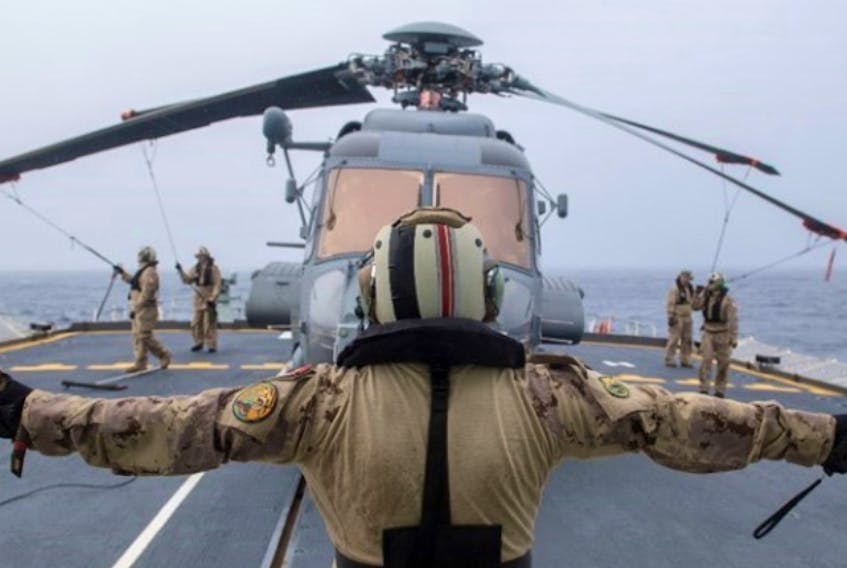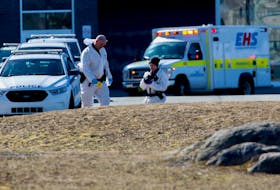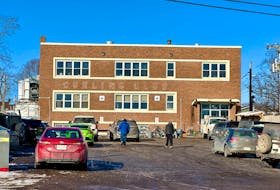TIM DUNNE
Nova Scotia has been hard hit recently: As of May 22, 58 Nova Scotians had passed away as victims of COVID-19; 22 were killed in Canada’s worst mass shooting on April 18-19; three of the six military personnel on HMCS Fredericton who died on April 29 when their CH-148 Cyclone helicopter crashed into the Ionian Sea were Nova Scotians; three-year-old Dylan Ehler is believed to have fallen into Truro’s Salmon River and drowned on May 6; and on May 18, Haligonian Capt. Jennifer Casey perished when a Snowbirds’ CT-114 Tutor aircraft crashed in Kamloops, B.C.
The April 29 military aircraft accident involved the recently-acquired Cyclone helicopter, the long-awaited replacement for the CH-124 Sea King. The second military accident, the 55-year-old Tutor flown by the Snowbirds aerobatic team, is the oldest aircraft in the Canadian military inventory.
Flight safety investigation teams were immediately dispatched for both accidents, as Canadian military protocols require all aircraft incidents to be investigated.
The RCAF has conducted an average of 2,920 investigations annually over the past five years, of which 99.8 per cent were Class III or IV conducted at the wing and squadron level. Only 0.2 per cent, averaging six investigations annually, were the more serious Class I and II investigations where the level of damage ranged from major damage to loss of an aircraft, or serious to fatal injuries.
All contribute to the directorate’s collection of lessons learned.
Col. John Alexander, director of flight safety, explains, “Every investigation is done differently. We have four graduated levels of investigation. The lowest level, Class 4, will generally encompass most of your Category D and E level accidents. Those are done at the wing and squadron levels. We have trained flight safety personnel at all our RCAF wings and flying units who can do these investigations within a 30-day turnaround.
“Class 2 investigations, the second highest, will usually result in what we call an enhanced supplementary report. This is a more streamlined report that can be produced more quickly than the typical full, or Class 1, flight safety investigation.
“A Class 1 investigation looks at Category A and Category B accidents which involve loss of life or major injury and perhaps loss of the airframe. A Category B accident may have major injuries with serious damage to an airframe where multiple major components are damaged. This would bump that incident up to a higher-level investigation that would be undertaken by DFS.”
DFS has a staff of 25, divided into two sections, a promotion and education section and an investigations section. The promotion and education section produces informational and educational materials, such as Flight Safety Comment magazine, flight safety posters and informational literature, and they conduct statistical and data analysis.
These “statisticians” look at flight safety-related data across the whole of the Canadian Armed Forces on a daily basis. The vast majority are Category D and E, where only minor or no damage is done but the potential for greater damage or injury was recognized.
“It could be something as innocuous as someone bumping into an aircraft or dropping a tool on an aircraft that causes a dent or a scratch on the paint,” Col. Alexander notes. “This is registered as a Category D. That is the nature of most of the incidents. We have adopted Edward T. Hall’s iceberg model, if you will, and most of those incidents are below the waterline.”
Anthropologist Edward T. Hall developed his “iceberg model” of understanding culture in the 1970s, in which he noted that about 10 per cent of culture can be observed, but you have to look further below the surface to understand the rest.
“So with the D and E categories, if you can prevent those from happening and learn from those incidents, you can prevent those increasingly dangerous and significant incidents, the ones causing serious damage to airframes and our personnel.”
The investigation
Within the DFS investigation section, desk officers who observe the individual fleets of aircraft will form the initial cadre of a flight safety investigation team when an accident or a serious incident occurs. The director of flight safety begins the investigation process by assigning a staff member as the investigator-in-charge. The composition of the team is contingent on the particulars of the accident.
A typical team will include a pilot, along with an aerospace engineering officer, a photographer and someone to assist with material collection and custody, and other specialists as necessary. The flight safety investigation team can draw from the wider community of the Canadian Armed Forces or anyone else who could provide subject matter expertise to any particular issue arising from the investigation.
“The team endeavours to discover that last layer of defence that didn’t respond the way it should and then works their way backwards to determine if there are also other layers, circumstances and factors that can be identified and rectified,” Col. Alexander explained.
Typically, questions revolve around mechanical issues, maintenance practices or human factors, and the human is the biggest part of that equation.
Ultimately, the flight safety investigation team needs to understand the circumstances that led up to the accident, so that “lessons learned” can be drawn from it, leading to the development of preventive measures to preclude a reoccurrence. It is not its mandate to assign responsibility for the accident, nor to determine liability and/or assign blame.
Flight safety investigations can take up to a year and sometimes longer and are not conducted in the same way as criminal investigations, where there are different acts of Parliament. However, the Aeronautics Act of Canada protects the privilege of an individual’s witness statement. The accident report does not divulge the witness’s identity or anything that is traceable back to the witness’s statement.
The requirement to summarize individuals’ statements in a generic fashion so they cannot be identified can create a challenge for the team when they write their reports. They go to great lengths to remove even an individual’s gender identification.
Flight safety reports used to remain classified, but no longer.
“It’s challenging in today’s media world,” Col. Alexander noted. “Folks always want to have an answer right away about what went wrong. The challenging part for us is to ensure we understand the events correctly and get the information out to the communities as quickly as we can to prevent it from happening again.”
Tim Dunne is a retired military public affairs officer with 37 years service in Canada, the United States, eastern and western Europe, the Middle East and Africa. He has served with both the United Nations and NATO. In his retirement, he is a military, defence and security analyst and writer.









